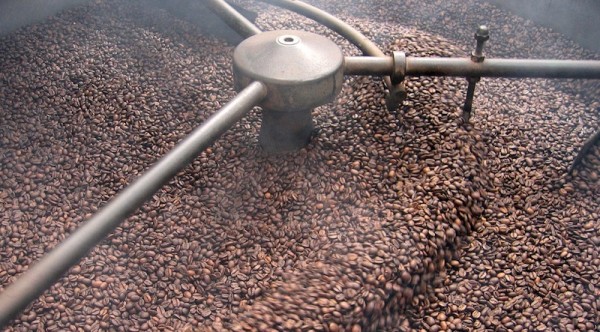A group of German and Swiss researchers have published a study that may help shed some light on how factors like batch size and varietal type can affect the transformation of volatile organic compounds (VOCs) during the coffee roasting process. Published in the Journal of Mass Spectronomy, the study is as much about spectronomy research as it is about coffee roasting, reaching extremely technical levels.
The research surrounded the use of an unbearably long-named process called resonance-enhanced multiphoton ionisation time-of-flight mass spectrometry (REMPI-TOFMS), used for fast and sensitive online monitoring of VOCs during roasting. In a practical sense, the team hoped to use REMPI-TOFMS monitoring inside an industrial roaster to determine the transient chemical signature of VOCs during roasting in real time.
(more: Scientists Create Method to Verify Kopi Luwak Authenticity)
For a better understanding of the purpose of the research, we turn to the online science news source Spectroscopy Now:
A cocktail of more than 850 volatile or semivolatile compounds has been identified to date in roasted coffee and the mixture varies according to the type of bean. Yet very little is known about the processes which occur within the bean when coffee beans are roasted, and the quality of the final product relies strongly on the skill of the coffee roast master.
In addition to the batch roasting tests, researchers also broke some ground by monitoring the roasting of individual beans, including one variety of Coffea arabica (arabica) and one variety of Coffea canephora (robusta). “The aim was to explore fundamental processes at the individual bean level and link these to phenomena at the batch level,” the researchers said.
(more: What is in Your Cup? A Coffee Chemistry Primer)
The team discovered differences in VOC gas releases among the different varietals, as well as sharper patterns of VOC releases during the individual bean roasts, especially in relation to cracking. VOCs during the roasting process were monitored in two ways: 1) probes in a drilled hole in the bean (inside); and on the bean’s surface (outside). Here’s the technical explanation:
The focus was on VOCs originating from hydrolysis and pyrolytic degradation of chlorogenic acids, like feruloyl quinic acid and caffeoyl quinic acid. The single bean experiments revealed interesting phenomena. First, differences in time–intensity profiles between inside versus outside (time shift of maximum) were observed and tentatively linked to the permeability of the bean’s cell walls material. Second, sharp bursts of some VOCs were observed, while others did exhibit smooth release curves. It is believed that these reflect a direct observation of bean popping during roasting. Finally, discrimination between Coffea arabica and Coffea canephora was demonstrated based on high-mass volatile markers, exclusively present in spectra of Coffea arabica.
While this is unlikely to affect the day-to-day operations of current roasters large and small, a primary question the research team explored was whether an REMPI-TOFMS process has some practical value in the monitoring of coffee roasting. The end goal, the research team wrote, is “linking these insights on single beans to processes occurring in industrial batch roasters, and translate this to situations of industrial and commercial significance.”
Click here for more on the study of REMPI-TOFMS in coffee roasting, including paid access to the full text.
Nick Brown
Nick Brown is the editor of Daily Coffee News by Roast Magazine.







Comment